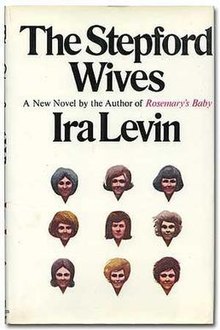
Joanna Russ was an American writer, academic and feminist. She is the author of a number of works of science fiction, fantasy and feminist literary criticism such as How to Suppress Women's Writing, as well as a contemporary novel, On Strike Against God, and one children's book, Kittatinny. She is best known for The Female Man, a novel combining utopian fiction and satire, and the story "When It Changed".

Wilton is a town in Fairfield County, Connecticut, United States. As of the 2020 census, the town population was 18,503. The town is part of the Western Connecticut Planning Region.

"Bluebeard" is a French folktale, the most famous surviving version of which was written by Charles Perrault and first published by Barbin in Paris in 1697 in Histoires ou contes du temps passé. The tale tells the story of a wealthy man in the habit of murdering his wives and the attempts of the present one to avoid the fate of her predecessors. "The White Dove", "The Robber Bridegroom", and "Fitcher's Bird" are tales similar to "Bluebeard". The notoriety of the tale is such that Merriam-Webster gives the word Bluebeard the definition of "a man who marries and kills one wife after another". The verb bluebearding has even appeared as a way to describe the crime of either killing a series of women, or seducing and abandoning a series of women.

A gynoid, or fembot, is a feminine humanoid robot. Gynoids appear widely in science fiction film and art. As more realistic humanoid robot design becomes technologically possible, they are also emerging in real-life robot design. Just like any other robot, the main parts of a gynoid include sensors, actuators and a control system. Sensors are responsible for detecting the changes in the environment while the actuators, also called effectors, are motors and other components responsible for the movement and control of the robot. The control system instructs the robot on what to do so as to achieve the desired results.
Equality feminism is a subset of the overall feminism movement and more specifically of the liberal feminist tradition that focuses on the basic similarities between men and women, and whose ultimate goal is the equality of both genders in all domains. This includes economic and political equality, equal access within the workplace, freedom from oppressive gender stereotyping, and an androgynous worldview.

The Stepford Wives is a 2004 American science fiction black comedy film directed by Frank Oz from a screenplay by Paul Rudnick and starring Nicole Kidman, Matthew Broderick, Bette Midler, Glenn Close, Christopher Walken, and Faith Hill. The second feature-length adaptation of Ira Levin's 1972 novel of the same name following the 1975 film of the same name, it received generally negative reviews from critics and was a box office failure, grossing $103 million worldwide on a $90–100 million budget.

Vashti was a queen of Persia and the first wife of Persian king Ahasuerus in the Book of Esther, a book included within the Tanakh and the Old Testament which is read on the Jewish holiday of Purim. She was either executed or banished for her refusal to appear at the king's banquet to show her beauty as Ahasuerus wished, and was succeeded as queen by Esther, a Jew. That refusal might be better understood via the Jewish tradition that she was ordered to appear naked. In the Midrash, Vashti is described as wicked and vain; she is viewed as an independent-minded heroine in feminist theological interpretations of the Purim story.

The Female Man is a feminist science fiction novel by American writer Joanna Russ. It was originally written in 1970 and first published in 1975 by Bantam Books. Russ was an ardent feminist and challenged sexist views during the 1970s with her novels, short stories, and nonfiction works. These works include We Who Are About To..., "When It Changed", and What Are We Fighting For?: Sex, Race, Class, and the Future of Feminism.
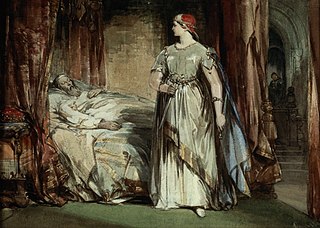
Lady Macbeth is a leading character in William Shakespeare's tragedy Macbeth. As the wife of the play's tragic hero, Macbeth, Lady Macbeth goads her husband into committing regicide, after which she becomes queen of Scotland. Some regard her as becoming more powerful than Macbeth when she does this, because she is able to manipulate him into doing what she wants. After Macbeth becomes a murderous tyrant, she is driven to madness by guilt over their crimes and kills herself offstage.
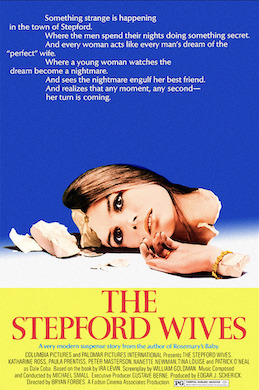
The Stepford Wives is a 1975 American satirical psychological thriller film directed by Bryan Forbes. It was written by William Goldman, who based his screenplay on Ira Levin's 1972 novel of the same name. The film stars Katharine Ross as a woman who relocates with her husband and children from New York City to the Connecticut community of Stepford, where she comes to find that the women live lives of unwavering subservience to their husbands.

Nanette Newman is an English actress and author. She appeared in nine films directed by her husband Bryan Forbes, including Séance on a Wet Afternoon (1964), The Whisperers (1967), Deadfall (1968), The Stepford Wives (1975) and International Velvet (1978), for which she won the Evening Standard Film Award for Best Actress. She was also nominated for the BAFTA Award for Best Actress in a Leading Role for another Forbes-directed film, The Raging Moon (1971).
Peter Masterson was an American actor, director, producer, and writer. He made his Broadway debut in November 1967 in The Trial of Lee Harvey Oswald, playing the title character. Although he got good notices, the play closed after nine performances.
Gender has been an important theme explored in speculative fiction. The genres that make up speculative fiction, science fiction, fantasy, supernatural fiction, horror, superhero fiction, science fantasy and related genres, have always offered the opportunity for writers to explore social conventions, including gender, gender roles, and beliefs about gender. Like all literary forms, the science fiction genre reflects the popular perceptions of the eras in which individual creators were writing; and those creators' responses to gender stereotypes and gender roles.
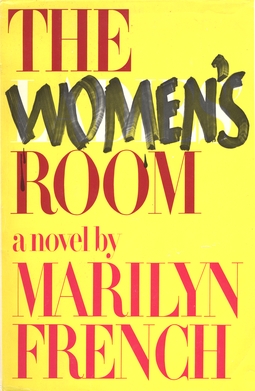
The Women's Room is the debut novel by American feminist author Marilyn French, published in 1977. It launched French as a major participant in the feminist movement and, while French states it is not autobiographical, the book reflects many autobiographical elements. For example, French, like the main character, Mira, was married and divorced, and then attended Harvard where she obtained a Ph.D. in English Literature. Despite the connection of The Women's Room to the feminist movement, French stated in a 1977 interview with The New York Times: "The Women's Room is not about the women's movement … but about women's lives today."

The Stepford Children is a 1987 American made-for-television horror science fiction thriller film inspired by the Ira Levin novel The Stepford Wives. It was directed by Alan J. Levi with a screenplay by Bill Bleich and starring Barbara Eden, Don Murray, Tammy Lauren, Randall Batinkoff and Pat Corley. It is the second in a series of sequels inspired by the 1972 novel and the original 1975 film The Stepford Wives.
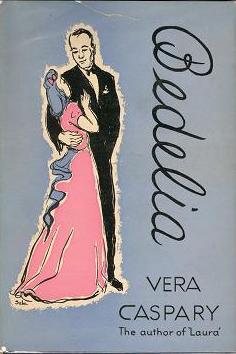
Bedelia is a novel by Vera Caspary first published in 1945 about a blissfully happy newlywed couple in which the husband learns that his wife may have a criminal past. His growing suspicion and discovery of corroborating evidence lead him to think that she might be a serial killer, and that he could be her next victim.

The Stepford Husbands is a 1996 American made-for-television thriller-drama film inspired by the Ira Levin novel The Stepford Wives. It was directed by Fred Walton with a screenplay by brothers Ken Wheat and Jim Wheat and starring Donna Mills, Michael Ontkean, Cindy Williams, Sarah Douglas and Louise Fletcher. It is the third in a series of sequels inspired by the 1972 novel and the original 1975 film The Stepford Wives.

Revenge of the Stepford Wives is a 1980 American made-for-television science-fiction thriller film inspired by the Ira Levin novel The Stepford Wives. It was directed by Robert Fuest with a screenplay by David Wiltse and starring Sharon Gless, Julie Kavner, Don Johnson, Arthur Hill, and Audra Lindley. It is the first in a series of sequels inspired by the 1972 novel and the original 1975 film The Stepford Wives.

Split Image is a crime novel by Robert B. Parker, the ninth and final novel in his Jesse Stone series. It was published a month after his death.
Chiara Colizzi is an Italian voice actress.
